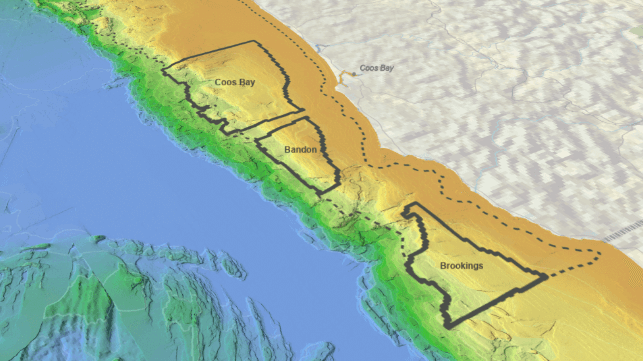BOEM Identifies Three Potential Wind Lease Areas Off Oregon

The U.S. Department of the Interior's Bureau of Ocean Energy Management (BOEM) has selected three areas off the coast of southern Oregon for potential offshore wind development, and its picks have attracted immediate opposition from fishermens' advocacy organizations.
According to BOEM, the planning for the three call areas has been under way since late 2019. The initial call for information is a request for comments from stakeholders and the general public, and it is a prelude to the designation of specific lease areas. BOEM's objective is to identify enough space for three gigawatts of near-term offshore wind power capacity.
The northernmost call area is located just off Coos Bay, Oregon, one of the largest commercial fishing ports in the region. It is also the largest of the three areas - about 1,360 square miles - and the area with the greatest total potential for energy generation. The southernmost call area, near Brookings, has the highest average wind speeds and the lowest levelized cost of energy.
The idea is particularly attractive because offshore wind could provide power to Oregon's coastal communities without a major upgrade of the trans-coastal electrical transmission grid. Coos Bay also has well-developed breakbulk port, which could be useful for installation and maintenance operations.
The areas under consideration extend out to water depths of up to 1,300 meters - far too deep for bottom-fixed wind towers, but practical for moored floating offshore wind turbines. A geospatial analysis of GIS data shows that the Coos Bay call area would overlap with several classes of vessel activity, including tug & tow routes, and with several fisheries. Though dungeness crab - the most valuable fishery on the Oregon coast - would not be affected, BOEM's analysis shows that the area does overlap with fisheries for pink shrimp, sablefish, whiting, albacore and other target species.
"BOEM has essentially chosen prime fishing areas for turbines threatening not just Oregon harvesting and processing jobs, but food security as well," said Heather Mann, Director of the Midwater Trawlers Cooperative.
"The effect of offshore wind development on fisheries, the habitat and the California Current is unknown. Placing giant turbines and anchors in a current system that is largely free-flowing and structure-free could cause irreparable harm to seabirds, marine mammals, fisheries management regimes and more," said Susan Chambers, chair of the Southern Oregon Ocean Resource Coalition, in a joint statement with other groups. "Robust environmental analyses need to be completed before areas are identified and leased, not after. Our productive California Current must be protected."
